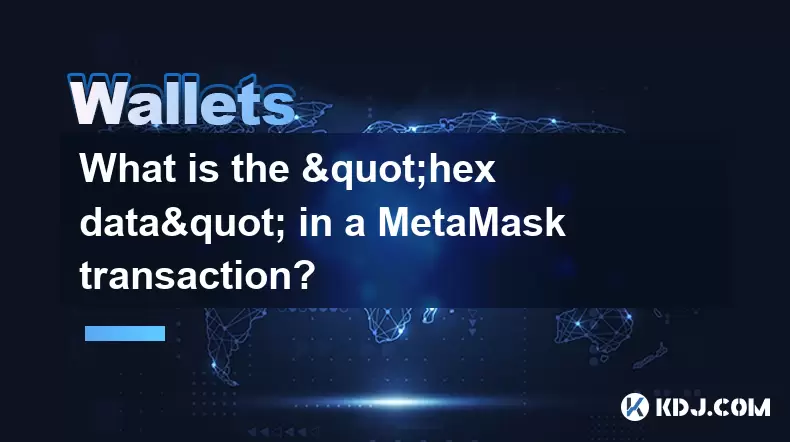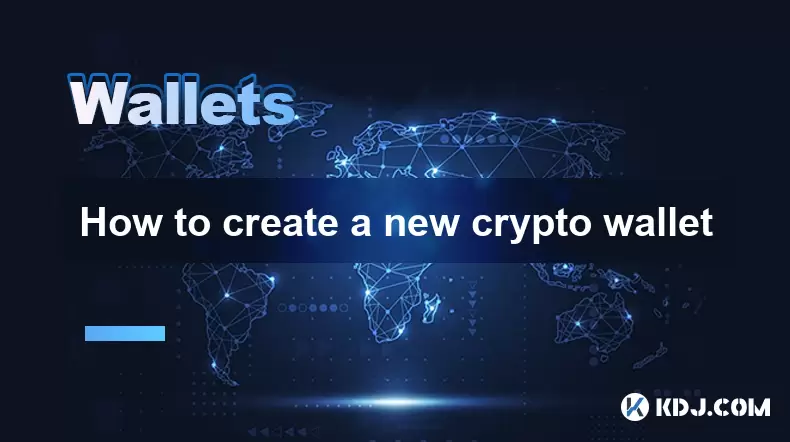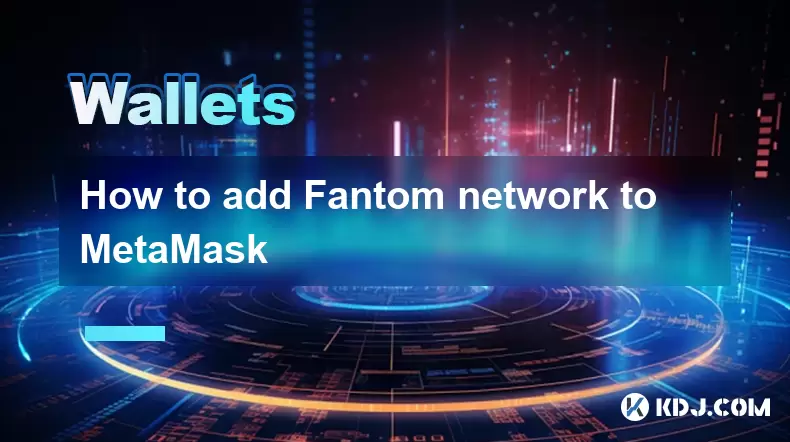-
 Bitcoin
Bitcoin $116600
0.45% -
 Ethereum
Ethereum $3902
1.46% -
 XRP
XRP $3.330
8.48% -
 Tether USDt
Tether USDt $1.000
0.02% -
 BNB
BNB $786.2
1.53% -
 Solana
Solana $176.5
2.61% -
 USDC
USDC $0.9998
0.00% -
 Dogecoin
Dogecoin $0.2219
3.89% -
 TRON
TRON $0.3390
-0.05% -
 Cardano
Cardano $0.7905
3.12% -
 Stellar
Stellar $0.4595
11.06% -
 Hyperliquid
Hyperliquid $41.14
5.28% -
 Sui
Sui $3.803
2.17% -
 Chainlink
Chainlink $19.28
11.13% -
 Bitcoin Cash
Bitcoin Cash $579.0
0.94% -
 Hedera
Hedera $0.2604
3.41% -
 Avalanche
Avalanche $23.30
2.76% -
 Ethena USDe
Ethena USDe $1.001
-0.03% -
 Litecoin
Litecoin $121.7
1.10% -
 UNUS SED LEO
UNUS SED LEO $8.983
0.36% -
 Toncoin
Toncoin $3.342
0.92% -
 Shiba Inu
Shiba Inu $0.00001287
1.98% -
 Uniswap
Uniswap $10.53
3.87% -
 Polkadot
Polkadot $3.882
2.79% -
 Dai
Dai $1.000
0.00% -
 Bitget Token
Bitget Token $4.471
1.77% -
 Cronos
Cronos $0.1517
2.88% -
 Monero
Monero $263.4
-4.80% -
 Pepe
Pepe $0.00001109
2.63% -
 Aave
Aave $282.5
2.95%
What is the "hex data" in a MetaMask transaction?
Hex data in Ethereum transactions encodes smart contract function calls and parameters, enabling interactions like token approvals or NFT mints via MetaMask’s advanced settings.
Aug 08, 2025 at 04:28 pm

Understanding Hex Data in Ethereum Transactions
When using MetaMask to interact with the Ethereum blockchain, you may encounter a field labeled “Hex Data” during transaction creation. This field contains hexadecimal-encoded information that represents the payload of a transaction. In most standard transactions—like sending ETH from one wallet to another—this field is empty because no additional data is required. However, when interacting with smart contracts, the hex data becomes essential. It carries encoded function calls, parameters, and other instructions that tell the Ethereum Virtual Machine (EVM) what action to perform.
The term "hex" refers to hexadecimal notation, a base-16 numbering system that uses digits 0–9 and letters A–F. This format is used because it's a compact way to represent binary data, which is how computers and blockchain systems process information. Every piece of data sent on-chain—whether it’s a function call or a token transfer—must ultimately be converted into this format before being broadcast to the network.
How Smart Contracts Use Hex Data
Smart contracts on Ethereum are written in languages like Solidity and compiled into bytecode, which is then deployed on the blockchain. When you want to call a function in a smart contract—such as approving a token spend or minting an NFT—MetaMask needs to send a message that includes which function to call and what arguments to pass. This is where hex data comes in.
The structure of this data follows the Ethereum Contract ABI (Application Binary Interface) specification. The first 4 bytes (8 hex characters) represent the function selector, derived from the Keccak-256 hash of the function signature. For example, the function transfer(address,uint256) generates a selector like a9059cbb. The rest of the hex data contains the encoded parameters—in this case, the recipient address and the amount, each padded to 32 bytes.
If you're manually constructing a transaction, you must ensure the hex data is correctly formatted. An incorrect function selector or misaligned parameter padding will result in a failed transaction or unintended behavior.
Viewing and Editing Hex Data in MetaMask
MetaMask allows users to view and input hex data directly when sending a transaction. To access this:
- Open MetaMask and initiate a "Send" transaction
- Click on the "Advanced" section
- Locate the "Hex Data" field (may appear as "Data (hex)" or similar)
- Input or inspect the hexadecimal string
This field is often hidden by default because most users don’t need to modify it. However, developers and advanced users frequently use it to:
- Interact with contracts not supported by standard interfaces
- Deploy new smart contracts
- Execute low-level calls that bypass UI limitations
If you paste hex data into this field, MetaMask will disable the ability to edit the recipient or amount in certain cases, as the data may already encode those values. Always verify the recipient address independently, as malicious data could redirect funds.
Generating Valid Hex Data Manually
Creating correct hex data requires precise encoding. Here’s how to build a simple function call:
- Identify the function signature (e.g.,
setGreeting(string)) - Compute the function selector:
- Hash the signature using Keccak-256:
web3.utils.sha3("setGreeting(string)") - Take the first 8 characters of the result
- Hash the signature using Keccak-256:
- Encode the input parameter:
- For strings, calculate the offset (usually 0x0000000000000000000000000000000000000000000000000000000000000020)
- Add the length of the string in bytes (e.g., 5 for "hello")
- Append the UTF-8 bytes of the string, padded to 32 bytes
- Concatenate the selector and encoded parameters
Using web3.js or ethers.js simplifies this:
const data = contract.interface.encodeFunctionData("setGreeting", ["hello"]);This returns a valid hex string like 0xa45f51310000000000000000000000000000000000000000000000000000000000000020000000000000000000000000000000000000000000000000000000000000000568656c6c6f000000000000000000000000000000000000000000000000000000, which can be pasted into MetaMask.
Security Implications of Hex Data
Transactions containing hex data are powerful but pose significant risks. Since the data is not human-readable, it can conceal malicious operations. For instance, a seemingly harmless transaction might include a call to approve() a large token allowance to a phishing contract.
MetaMask attempts to decode known function calls and display them in a readable format. If it recognizes the function selector, it may show something like “Call: setGreeting('hello')”. However, unknown or malformed data will remain as raw hex, offering no insight into its purpose.
Never send a transaction with hex data unless you:
- Fully trust the source of the data
- Have verified the function call using a block explorer or ABI decoder
- Understand the implications of the parameters being passed
Wallets cannot always detect harmful payloads—only proper due diligence can prevent loss of funds.
Common Use Cases for Hex Data
- Contract Deployment: When deploying a new contract, the hex data field contains the full bytecode.
- Batch Operations: Some dApps bundle multiple actions into a single transaction using custom logic encoded in hex.
- Governance Proposals: On-chain voting often requires submitting hex data that encodes the proposal ID and vote choice.
- Rescuing Stuck Tokens: Calling
transfer()on a token contract to recover mistakenly sent ERC-20 tokens. - Interfacing with Minimalist dApps: Some decentralized applications lack frontends and require direct hex input.
Each of these scenarios relies on accurate encoding. A single incorrect byte can invalidate the transaction or lead to unexpected outcomes.
Frequently Asked Questions
What happens if I send ETH with hex data to a regular wallet?
Most externally owned accounts (EOAs) like standard MetaMask wallets don’t process hex data. The transaction will succeed, but the data is ignored. However, if the recipient is a smart contract, it may attempt to execute the data as a function call, potentially leading to reverted transactions or unintended interactions.
Can I decode hex data from a past transaction?
Yes. Use a block explorer like Etherscan. Navigate to the transaction, view the input data, and click “Decode Input Data” if the contract is verified. Alternatively, use tools like ethers.js or online ABI decoders by providing the contract ABI and the hex string.
Why does MetaMask sometimes show a warning when hex data is present?
MetaMask displays warnings because hex data can trigger arbitrary smart contract logic. The warning indicates that the transaction may do more than just send ETH, such as approving token spending or changing contract state. Users should review the decoded function if available.
Is it safe to share hex data with others?
Sharing hex data is generally safe, as it does not contain private keys. However, it may reveal your intended actions (e.g., which function you’re calling). Avoid sharing data that includes sensitive parameters unless necessary. Never share signed transaction data, as it can be broadcast by others.
Disclaimer:info@kdj.com
The information provided is not trading advice. kdj.com does not assume any responsibility for any investments made based on the information provided in this article. Cryptocurrencies are highly volatile and it is highly recommended that you invest with caution after thorough research!
If you believe that the content used on this website infringes your copyright, please contact us immediately (info@kdj.com) and we will delete it promptly.
- Bitcoin in 2025: The Impossibility of Ownership?
- 2025-08-08 20:30:12
- ZORA's Ascent: Trading Volume Surges, Price Targets in Sight
- 2025-08-08 20:30:12
- Solana, Rollblock, and Crypto Gaming: Charting the Trends in 2025
- 2025-08-08 19:50:11
- BlockchainFX: The Crypto Presale Investors Can't Ignore
- 2025-08-08 19:10:12
- Pump.fun, Memecoins, Glass Full: Solana's Launchpad Wars Heat Up!
- 2025-08-08 18:50:12
- Crypto Market Heats Up: Altcoin Spree Drives Market Cap to $3.87T
- 2025-08-08 19:05:02
Related knowledge

How to reset your MetaMask password
Aug 08,2025 at 01:28pm
Understanding the MetaMask Password Reset ProcessMany users confuse the MetaMask password with the seed phrase or private key, but they serve differen...

How to buy Dogecoin on MetaMask
Aug 08,2025 at 03:42am
Understanding Dogecoin and MetaMask CompatibilityDogecoin (DOGE) is a popular meme-based cryptocurrency that operates on its own blockchain, originall...

How to create a new crypto wallet
Aug 07,2025 at 09:22pm
Understanding the Basics of a Cryptocurrency WalletA cryptocurrency wallet is a digital tool that allows users to store, send, and receive digital ass...

How to add Fantom network to MetaMask
Aug 07,2025 at 08:21am
Understanding the Fantom Network and MetaMask IntegrationThe Fantom network is a high-performance, scalable, and secure blockchain platform designed f...

How to update the firmware on your Trezor wallet
Aug 07,2025 at 05:00pm
Understanding the Role of Staking in Cryptocurrency EcosystemsStaking has become a fundamental component of many blockchain networks that operate unde...

How to export your transaction history from Coinbase Wallet
Aug 07,2025 at 06:50am
Understanding Coinbase Wallet and Transaction HistoryCoinbase Wallet is a self-custodial cryptocurrency wallet that allows users to store, manage, and...

How to reset your MetaMask password
Aug 08,2025 at 01:28pm
Understanding the MetaMask Password Reset ProcessMany users confuse the MetaMask password with the seed phrase or private key, but they serve differen...

How to buy Dogecoin on MetaMask
Aug 08,2025 at 03:42am
Understanding Dogecoin and MetaMask CompatibilityDogecoin (DOGE) is a popular meme-based cryptocurrency that operates on its own blockchain, originall...

How to create a new crypto wallet
Aug 07,2025 at 09:22pm
Understanding the Basics of a Cryptocurrency WalletA cryptocurrency wallet is a digital tool that allows users to store, send, and receive digital ass...

How to add Fantom network to MetaMask
Aug 07,2025 at 08:21am
Understanding the Fantom Network and MetaMask IntegrationThe Fantom network is a high-performance, scalable, and secure blockchain platform designed f...

How to update the firmware on your Trezor wallet
Aug 07,2025 at 05:00pm
Understanding the Role of Staking in Cryptocurrency EcosystemsStaking has become a fundamental component of many blockchain networks that operate unde...

How to export your transaction history from Coinbase Wallet
Aug 07,2025 at 06:50am
Understanding Coinbase Wallet and Transaction HistoryCoinbase Wallet is a self-custodial cryptocurrency wallet that allows users to store, manage, and...
See all articles

























































































